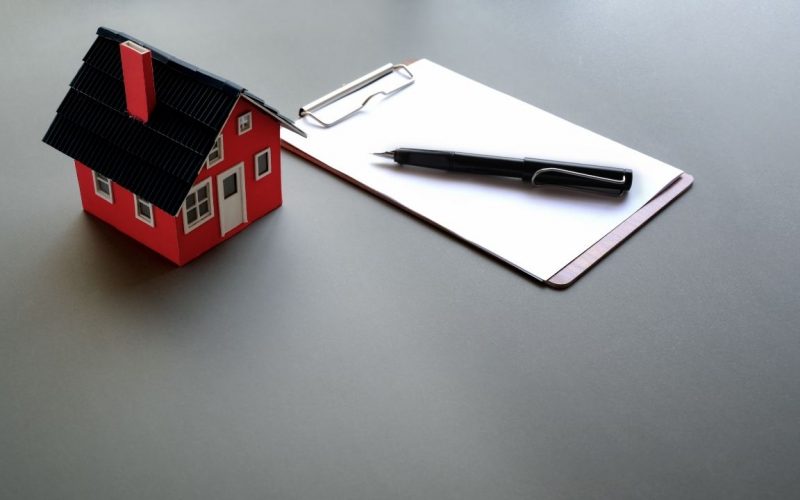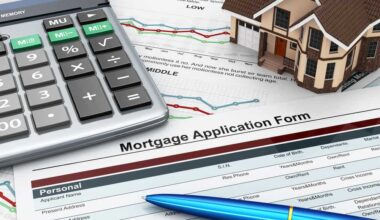To own a house is an American dream. In fact, buying a home is one of the largest purchases lots of people will make in their lifetime. However, to achieve this goal, you need to have a home budget before you go for home mortgages.
Doing this will ensure you don’t go outside the scope of your budget, and you’d borrow only what you need for the house.
For some people using a mortgage refinance calculator is a good way to maximize their mortgage loan, reduce their interest, or shorten the term of their loan.
Find out what mortgage refinancing is all about and what a mortgage refinance calculator does for you as you read through this article.
What is Mortgage Refinancing?
Mortgage refinancing simply means replacing your existing home mortgage with a new loan.
Refinancing your mortgage is similar to other loans that you apply for. This is because the application process involves thorough diving into your financial records.
There are several reasons why most people refinance. However, if you are looking for a better mortgage rate that reduces your interest rate and shortens your loan term, then refinancing your mortgage loan may be the right option for you.
When you refinance, you pay off your initial loan with the money gotten from the new mortgage. More so, this process of refinancing gives you an option to choose a shorter-term loan which can help you save interest and become a homeowner soon.
Furthermore, there are two basic options available to you when you refinance;
- A rate-and-term refinance
- Cash-out refinance
A rate-and-term refinance alters the interest rate or term or sometimes both of an existing mortgage loan, and equity isn’t taken from the home.
While a cash-out refinance gives you a new home loan that’s worth more than what you owe. Additionally, it pulls out the equity built up in the home while the difference between the both is paid to you in cash.
READ ALSO: Secondary Mortgage Market: Step By Step Guide On How It Works
How Much Does it Cost to Refinance a Mortgage?
When refinancing a mortgage, you won’t necessarily have to make a large downpayment but you’ll still need to pay closing costs.
Usually, refinance costs are usually between 2% to 5% of the new mortgage balance, so you have a high amount of money in fees. Refinance costs vary from lender to lender, so it’s important that you use the best mortgage lender for your refinance loan.
The specific fees you’d be required to pay will vary depending on lots of factors like the type of refinance you’re getting, as well as the location of your home.
Other factors that influence the amount of refinance loans you get include;
- Survey fee
- Appraisal fee
- Title fees
- Discount points
- Credit check fee
- Inspection fees
- Loan origination fees
- Escrow fees
- Application fee
- Attorney fees
Depending on the equity you have on your home, you may be able to add some or all of your refinance closing costs to your new loan.
This is also known as a no-closing-cost refinance. Wherein you are responsible for the fees, but you’re paying them over the life of the loan instead of upfront.
READ ALSO: Mortgage Brokers: How do Mortgage Brokers Make Money in the US (Updated)
Why Should You Refinance?
There are lots of reasons for you to refinance your mortgage loan. They include;
#1. Removing mortgage insurance on FHA mortgage
Irrespective of your downpayment amount, FHA loans require mortgage insurance. One way to get rid of this mortgage insurance is by refinancing your loan.
Once you have a 20% equity on your property, you are good to go.
#2. Paying off your mortgage earlier
With mortgage refinancing, you can get another loan for a short-term this time compared to your initial loan.
This way, you are able to pay back your mortgage on time because of its short term. However, you’d have to pay a larger sum monthly.
#3. Cashing out the equity of your home
A cash-out refinance loan option can be a cost-effective way to make upgrades to your home loan.
READ MORE: Zillow Mortgage Calculator: How Accurate is Zillow Mortgage Calculator? (+ Quick Tips)
#4. Reducing your monthly mortgage with a long-term loan
Opposite to the short-term loan, when you refinance for a loan with a longer payment period, your monthly mortgage payment reduces.
However, the disadvantage of this is that you are increasing the life of your loan, as well as being prone to an increased rate in the future.
#5. Going from an adjustable-rate to a fixed rate
With a refinance loan, you can move from an adjustable-rate loan to a fixed loan. This way you’re able to save money by making your rate a fixed amount on the new loan.
When is the Wrong Time to Refinance Your Mortgage?
As we’ve established before, there are several reasons why people choose to refinance their loans. However, you need to be sure that you are doing it for the right reasons.
Firstly, you need to be sure refinancing will greatly benefit your finances and you’ll stay in the home long enough to recover the costs.
Ultimately, it is a wrong idea to refinance your home loan for short-term gains.
READ MORE: Mortgage: Simple 2021 Guide for Beginners and all you need Updated!!!
How Can A Mortgage Calculator Help?
A mortgage payment usually consists of four major components that are pronounced together as PITI. They are; Principal, Interest, taxes, and Insurance.
Lots of homebuyers are aware of these components and are also, not ready for the extra fees that come with homeownership. These fees include private mortgage insurance, utility bills, homeowners association (HOA)fees, etc.
Using a mortgage refinance calculator can help you factor in PITI and HOA fees but not other expenses, so make sure the monthly payment it computes for you isn’t the exact maximum of what you can afford. It is important to have some part of your budget that covers unexpected costs.
Additionally, you can adjust your loan and downpayment amount, as well as the interest rate and loan term to see how they affect your monthly mortgage payment.
Other factors such as your debt-to-income ratio (DTI) and credit score will be taken into consideration. More so, having a higher DTI and a low credit score can make you look riskier in the eyes of a mortgage lender.
And this affects your mortgage rates. Because, the riskier you appear on paper, the higher your interest rate is likely to be.
READ MORE: LIABILITY INSURANCE: Simplified!!!, Overview, Types & Quotes
How much does your house payment go down when you refinance?
Similarly, refinancing might lower your monthly mortgage payment by lengthening the loan’s term. When possible, try to reduce your interest rate by 1% to 2% before refinancing your mortgage.
How do you calculate if it is worth refinancing?
Compare the monthly payment of your present loan to the proposed payment on the new loan to determine the worth of refinancing your house. After making the same amount of payments that you have been paying on your present loan, compare the principle balance on your prospective loan using an amortization schedule.
What are the negative effects of refinancing?
It costs money to refinance. In fact, there’s a strong chance that your closing fees, which may include a loan origination charge, an appraisal, and title insurance, will total thousands of dollars. You can eventually pay for those closing fees if you make savings on your interest and monthly payments.
How soon is too soon to refinance a house?
While it is possible to refinance a mortgage instantly in some circumstances, you usually need to wait at least six months and often even two years before you may pursue a cash-out refinance on your property.
Is refinancing based on current home value?
The value of your home affects refinance rates as well. You might be eligible for an even better interest rate than you had anticipated or be able to refinance with more cash available if an appraisal reveals that the value of your house has grown.
Is it worth refinancing from 30 to 20 years?
A 30-year fixed-rate loan can be the better option if monthly payments and cash flow are your top priorities. It can be preferable to obtain a 20-year mortgage if your primary goal is to pay as little interest as possible on the money you borrow for your mortgage.
What is the number one downfall to refinancing your home?
Refinancing has a lot of drawbacks, but the biggest is that it is expensive. You’re obtaining a new mortgage to pay off the previous one, so you’ll be required to cover the majority of the same closing costs as when you first purchased the house, such as origination fees, title insurance, application fees, and closing costs.
Bottom Line
I hope this article carefully explains what a mortgage refinance calculator does for you and what mortgage refinancing is all about.
If you have any questions or suggestions, kindly let me know in the comments section.
Good luck!
Recommendation
- Secured Bonds: The Ultimate Guide
- BUSINESS CREDIT SCORE: How to Check Your Business Credit Score
- Personal Finance: Basics, Importance, Types, Management ( + Free Softwares)
- What are the Types of Brokers and Brokering Services?
- HOUSING RATIO: How to Calculate Housing Ratio with Ease (+ Free Tools)
References






